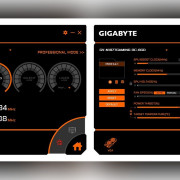Phosphor (forge)
Содержание:
Fabric 1.16+
| Name | Known Incompatibilities | Description | Author | Performance Improvement |
|---|---|---|---|---|
| Starlight | Phosphor is a Minecraft mod which works to optimize one of game’s most inefficient areas, the lighting engine | CaffeineMC | Both | |
| Starlight | Phosphor | Fabric mod for completely rewriting the vanilla light engine. | Spottedleaf (PaperMC) | Both |
| Mods that remove the DFU | LazyDFU is an optimization mod that makes the initialization of DataFixerUpper «lazy» | astei | Both | |
| Unknown | Optimize Minecraft loading performance to be smoother on low end systems and scale better on high end systems | UltimateBoomer | Both | |
| Hydrogen, Enhanced Block Entities | This mod launches minecraft faster by caching all of the content on first launch and then loading that cache on the next one | alphaqu | Client | |
| Unknown | This mod reduces the memory usage of Minecraft in a few different ways | malte0811 | Both | |
| VanillaFix | Unknown | Bug fixes and optimizations for Minecraft | BoogieMonster1O1 (Dimensional Development) | Both |
| Mods that utilize of the FRAPI | Sodium is a free and open-source rendering engine replacement for the Minecraft client that greatly improves frame rates, reduces micro-stutter, and fixes graphical issues in Minecraft | CaffeineMC | Client | |
| Sodium | Advanced Rendering Engine for Fabric | grondag | Client | |
| DashLoader | Reduces the memory usage of the game in more modded scenarios | CaffeineMC | Client | |
| None | EntityCulling using async path-tracing to skip rendering Tiles/Entities that are not visible | tr9zw | Client | |
| Unknown | Allows the user to adjust the (client) distance at which different entities render | capnkork | Client | |
| Unknown | Adds culling to leaf blocks, providing a huge performance boost over vanilla. | Motschen | Client | |
| Sodium, DashLoader | EBE is a mod which aims to increase the performance of block entity rendering, as well as offer customizability via resource packs. | FoundationGames | Client | |
| Unknown | Removes the Block Entity Renderer from the bed and replaces it with the default minecraft model renderer. | Motschen | Client | |
| Unknown | This mod helps by removing dynamic models from chests and making them render as static chunk geometry. | fake_domi | Client | |
| Sodium | Better Biome Blend is a mod which accelerates the biome color blending algorithm. | FionaTheMortal | Client | |
| Unknown | ResolutionControl+ allows you to change Minecraft’s render resolution separately from the HUD elements. | Ultimate Boomer | Client | |
| Unknown | This is to prevent client-side lag and general annoyance when using large numbers of campfires in farms. | supersaiyansubtlety | Client | |
| Unknown | Fixes MC-192362 / MC-189565, which causes drastically large log file sizes and lag | Client | Draylar | |
| None | Lithium is a general-purpose optimization mod for Minecraft which works to improve a number of systems without changing any behavior | CaffeineMC | Server | |
| Hopper Optimizations | Unknown | A mod that optimizes hoppers and their interactions with entities and inventories | 2No2Name | Server |
| Unknown | Krypton is a Minecraft mod designed for the Fabric mod loader that implements a suite of optimizations focused on the Minecraft networking stack | astei | Server | |
| Unknown | Optimization mod that generates overworld and nether terrain much faster than vanilla minecraft at the cost of breaking parity. | gegy1000, SuperCoder79 | Server | |
| Tic-Tacs (Dangerous) | C2ME | Tic-TACS is an experimental reimplementation of Minecraft’s chunk loading engine | gegy | Server |
| C2ME (DANGEROUS) | Tic-Tacs, + | A Fabric mod designed to improve the chunk performance of Minecraft. | YatopiaMC | Server |
| Carpet, Dimensional Threading | This is a mod, that attempts to multithread minecraft’s tick execution. | himekifee | Server | |
| Dimensional Threading (Dangerous) | Unknown | Minecraft mod which optimizes the processing of multiple Dimensions, by assigning them independent threads | WearBlackAllDay | Server |
| Unknown | This mod makes it so that nearby experience orbs merge together | NinjaPhenix | Server | |
| None | This is a mod aimed at improving performance of all crafting-related functions. | tfarecnim | Server | |
| None | Similar to FastWorkbench, it caches the last recipe used, and checks this recipe first before re-scanning the entire registry | tfarecnim | Server | |
| FastFurnace, FastBench (?) | Caches recipe lookup for crafting and furnaces to lessen server lag caused by crafting stacks of items and large amounts of furnaces ticking | biom4st3r1 | Server |
Forge 1.12.2
| Name | Known Incompatibilities | Description | Author | Performance Improvement |
|---|---|---|---|---|
| None | FoamFix is a mod designed to optimize post-1.7.10 modded Minecraft using simple, targeted optimizations | asiekierka | Both | |
| Mods using outdated mixin versions | VanillaFix is a mod that improves performance and fixes bugs and annoyances in vanilla Minecraft | Runemoro (Dimensional Development) | Both | |
| Mods using outdated mixin versions | Phosphor is a Minecraft mod which works to optimize one of game’s most inefficient areas, the lighting engine | jellysquid_ | Both | |
| None | BetterFps is a Minecraft mod that add a few performance improvements, trying to be compatible with other mods. | Guichaguri | Both | |
| Mods using outdated mixin versions | Surge is an open source mod which aims to improve the load time and performance of the game. | DarkhaxDev | Both | |
| None | Clumps groups XP orbs together into a single entity to reduce lag when there are many in a small area | jaredlll08 | Both | |
| None | This mod is a client-side performance enhancing mod, which stops particles that are outside the player’s view from rendering | bl4ckscor3 | Client | |
| Pixelmon, Sync | Entity Culling is a small client-side performance core mod which improves the rendering of entities and tile entities. | meldexun | Client | |
| FoamFix-Anarchy, MCPatcher | TexFix optimizes the loading of textures of other mods | Speiger | Client | |
| None | Better Biome Blend is a mod which accelerates the biome color blending algorithm. | FionaTheMortal | Client | |
| None | Similar to FastWorkbench, it caches the last recipe used, and checks this recipe first before re-scanning the entire registry. | Shadows_of_Fire | Server (Must be installed in client aswell) | |
| None | This is a mod aimed at improving performance of all crafting-related functions. | Shadows_of_Fire | Server (Must be installed in client aswell) | |
| None | Simplified AI modification mod focused on performance and low-level modifications to AIs in the game | QueenOfMissiles | Server | |
| None | This mod adds two configuration options to control how dropped items combine on the ground. This can significantly improve performance in areas with lots of dropped items | bl4ckscor3 | Server | |
| Unknown | Fixes a Minecraft bug where Village doors keep chunks loaded. | Speiger | Server | |
| Unknown | This mod increases stack sizes of experience and items | Lunatrius | Server | |
| PortalSuperCache (Dangerous) | Unknown | When using this mod, your game will search portal blocks at a high speed on teleport. | LucunJi | Server |
| Unknown | Limiting a player’s tick time in the world to evenly distribute time. | Terminator_NL | Server | |
| Unknown | This mod makes overworld terrain generate faster by replacing the three 3D noise generators in the overworld with multithreaded versions. | bloodnbonesgaming | Server (Must be installed in client aswell) | |
| Unknown | Lightweight mod project which hugely improves performance and blocklag. | someaddon | Server |
Forge 1.17.X
| Name | Known Incompatibilities | Description | Author | Performance Improvement |
|---|---|---|---|---|
| Unknown | This mod reduces the memory usage of Minecraft in a few different ways | malte0811 | Both | |
| Unknown | Clumps groups XP orbs together into a single entity to reduce lag when there are many in a small area. | jaredlll08 | Both | |
| None | EntityCulling using async path-tracing to skip rendering Tiles/Entities that are not visible | tr9zw | Client | |
| Unknown | This mod adds two configuration options to control how dropped items combine on the ground. This can significantly improve performance in areas with lots of dropped items | bl4ckscor3 | Server | |
| APTweaks | This is a small/light serverside utility mod to help balancing lag (TPS) and chunk view/load distance. | someaddon | Server | |
| None | Simplified AI modification mod focused on performance and low-level modifications to AIs in the game | QueenOfMissiles | Server |
Logging
Finally, Phosphor was modified to optionally output some of the information it obtains to a log file. The information included in the log is as follows:
- Information regarding found sources/sinks/sanitizers to ensure the desired functions are being tracked.
- The function name of any sink that had a tainted variable pass through it.
- The taint level of any sunken tainted variable.
- The value of sunken variables.
- A stack trace of the thread when a tainted variable was sunk.
Much of this information was already being collected in the unmodified Phosphor, so much of the modification was simply outputting it to a file rather than standard output when it crashed due to a tainted variable flowing to a sink.
The information written to this log file was intended to be useful to web administrators and developers looking to find potential vulnerabilities in their systems.
Forge 1.7.10
| Name | Known Incompatibilities | Description | Author | Performance Improvement |
|---|---|---|---|---|
| None | BetterFps is a Minecraft mod that add a few performance improvements, trying to be compatible with other mods. | Guichaguri | Both | |
| Forge Essentials | FastCraft is a sophisticated mod which improves the client and server performance significantly without any game play changes. | sfPlayer1 | Both | |
| None | FoamFix is a mod designed to optimize post-1.7.10 modded Minecraft using simple, targeted optimizations. | asiekierka | Both | |
| Unknown | Configuration options | skyboy026 (TeamCoFH) | Both | |
| Unknown | Prevents squids spawning in regions where they would instantly despawn | hilburn | Server |
Logging
Finally, Phosphor was modified to optionally output some of the information it obtains to a log file. The information included in the log is as follows:
- Information regarding found sources/sinks/sanitizers to ensure the desired functions are being tracked.
- The function name of any sink that had a tainted variable pass through it.
- The taint level of any sunken tainted variable.
- The value of sunken variables.
- A stack trace of the thread when a tainted variable was sunk.
Much of this information was already being collected in the unmodified Phosphor, so much of the modification was simply outputting it to a file rather than standard output when it crashed due to a tainted variable flowing to a sink.
The information written to this log file was intended to be useful to web administrators and developers looking to find potential vulnerabilities in their systems.
Chunk Pregeneration
| Name | Versions | ModLoader | Description | Author |
|---|---|---|---|---|
| 1.4.7, 1.7.X, 1.8.9, 1.10.X, 1.11.X, 1.11.2, 1.12.X, 1.14.4, 1.15.2, 1.16.X | Forge | Chunk Pregenerator is a tool that allows you to generate your World more efficiently. | Speiger | |
| 1.14.X, 1.15.X, 1.16.X, 1.17.X | Fabric | Mod that allows you to pregenerate chunks for your server or for singleplayer while running fabric | SuperCoder79 | |
| Chunky | Forge: 1.16.X, 1.17.X; Fabric: 1.16.X, 1.17.X; Sponge: Sponge 8+; Spigot: 1.13.X, 1.14.X, 1.15.X, 1.16.X, 1.17.X | Pre-generates chunks, quickly and efficiently | pop4959 |
² Cull Particles isn’t needed anymore in newer Forge versions, it was implemented in forge.
³ Do not blame me if you didn’t read this notice, if you try to load a older world in a newer instance of the game, and you have one of these mods installed, bad things will happen, uninstall the mod first.
Nachweis
Spektroskopisch
Die Methode der Wahl für den Nachweis von Phosphorverbindungen ist die 31P-NMR-Spektroskopie. 31P ist das einzige natürlich vorkommende Phosphor-Isotop und hat eine Kernspin-Quantenzahl von 1/2. Im Vergleich zum Wasserstoff beträgt die relative Empfindlichkeit nur 6,6 %. Der Resonanzbereich beträgt ca. 700 ppm (P4 hat beispielsweise eine Verschiebung von −488 ppm). Als Standard wird im Allgemeinen 85%ige Phosphorsäure verwendet. Da Phosphor ein Spin-1/2-Kern ist, sind die Spektren sehr gut auszuwerten. Wenn zusätzlich der Wasserstoff entkoppelt wird, resultiert meist ein scharfes Signal. Die Phosphorverschiebung ist stark abhängig von seinen Bindungspartner, er ist also sehr gut für die Identifikation von bekannten Verbindungen geeignet. Bei unbekannten Verbindungen ist die Aussagekraft oft beschränkt, weil einem Spektrenbereich nur selten einer Verbindungsklasse exklusiv zuzuordnen ist.
| Derivate mit | Chemische Verschiebung (δ in ppm) |
|---|---|
| 3-bindigem P | −180 bis +200 |
| 4-bindigem P | −120 bis +130 |
| 5-bindigem P | −100 bis −20 |
| 6-bindigem P | −220 bis −130 |
Nasschemisch
Die quantitative und qualitative Bestimmung von Phosphor erfolgt über das Phosphat (genauer Orthophosphat PO43−). Gebundener Phosphor wird hierzu gegebenenfalls durch oxidierenden Aufschluss in Phosphat überführt.
Qualitativer Nachweis
Bei der Nachweisreaktion mit Ammoniummolybdat erhält man in saurer Lösung einen gelben Niederschlag von Ammoniummolybdophosphat:
In alkalischer Ammoniaklösung fällt Phosphat bei Anwesenheit von Magnesium-Ionen als Magnesiumammoniumphosphat aus:
Der Nachweis ist auch in Form von Zirconiumhydrogenphosphat durchführbar:
Nicht korrekt ist, wie in vielen Lehrbüchern angegeben, die Form Zr3(PO4)4, in wässrigen Lösungen bildet sich diese Verbindung nicht!
Historisch ist die Mitscherlich Probe zum Nachweis von weißem Phosphor interessant, die allem voran bei vermuteten Phosphorvergiftungen eingesetzt wurde. Hierbei wird der Mageninhalt mit Wasser erhitzt, wobei der weiße Phosphor, der mit dem Wasserdampf flüchtig ist, anschließend kondensiert und bei Berührung mit Luftsauerstoff durch ein Leuchten (Chemolumineszenz) in Erscheinung tritt.
Bei Strukturuntersuchungen von Verbindungen, in denen Phosphor enthalten ist, eignet sich die 31P-Kernresonanzspektroskopie.
Gravimetrie
Für eine gravimetrische Bestimmung kann aus Phosphat und Molybdationen in stark salzsaurer Lösung ein gelbes Molybdophosphation gebildet werden:
Mit 8-Hydroxychinolin (kurz HOx oder Oxin genannt) bildet sich ein schwer löslicher Niederschlag von Oxin-12-molybdo-1-phosphat, der anschließend bei 160 °C getrocknet und in wasserfreier Form gewogen wird.
Fällungsform:
Wägeform:
- (H2Ox)3[P(Mo3O10)4] (Farbe: dunkelorange)
Der grobkristalline Niederschlag enthält nur 1,37 % Phosphor. Somit sind vor allem kleinere Phosphatmengen gut bestimmbar (siehe Mikromol-Verfahren).
Volumetrie
Volumetrische Phosphatbestimmungen werden durch Fällung mit La3+ oder mit Bi3+-Maßlösungen und anschließender Rücktitration mit EDTA durchgeführt.
Colorimetrie/Photometrie
Für die Bestimmung geringer Konzentrationen an Phosphat in Süßwasserproben wird ein tiefblauer Antimon-Phosphormolybdat-Komplex gebildet, der seine intensive Färbung erst durch ein Reduktionsmittel, meist Ascorbinsäure, erhält. Damit sind empfindliche Nachweise bis in den Bereich von ca. 0,6 mg PO4/l (ca. 0,2 mg P/l) möglich.
Das Verfahren ist in EN 1189:1996 (früher DIN 38405 D11) normiert.
Nachweis
Spektroskopisch
Die Methode der Wahl für den Nachweis von Phosphorverbindungen ist die 31P-NMR-Spektroskopie. 31P ist das einzige natürlich vorkommende Phosphor-Isotop und hat eine Kernspin-Quantenzahl von 1/2. Im Vergleich zum Wasserstoff beträgt die relative Empfindlichkeit nur 6,6 %. Der Resonanzbereich beträgt ca. 700 ppm (P4 hat beispielsweise eine Verschiebung von −488 ppm). Als Standard wird im Allgemeinen 85%ige Phosphorsäure verwendet. Da Phosphor ein Spin-1/2-Kern ist, sind die Spektren sehr gut auszuwerten. Wenn zusätzlich der Wasserstoff entkoppelt wird, resultiert meist ein scharfes Signal. Die Phosphorverschiebung ist stark abhängig von seinen Bindungspartner, er ist also sehr gut für die Identifikation von bekannten Verbindungen geeignet. Bei unbekannten Verbindungen ist die Aussagekraft oft beschränkt, weil einem Spektrenbereich nur selten einer Verbindungsklasse exklusiv zuzuordnen ist.
| Derivate mit | Chemische Verschiebung (δ in ppm) |
|---|---|
| 3-bindigem P | −180 bis +200 |
| 4-bindigem P | −120 bis +130 |
| 5-bindigem P | −100 bis −20 |
| 6-bindigem P | −220 bis −130 |
Nasschemisch
Die quantitative und qualitative Bestimmung von Phosphor erfolgt über das Phosphat (genauer Orthophosphat PO43−). Gebundener Phosphor wird hierzu gegebenenfalls durch oxidierenden Aufschluss in Phosphat überführt.
Qualitativer Nachweis
Bei der Nachweisreaktion mit Ammoniummolybdat erhält man in saurer Lösung einen gelben Niederschlag von Ammoniummolybdophosphat:
In alkalischer Ammoniaklösung fällt Phosphat bei Anwesenheit von Magnesium-Ionen als Magnesiumammoniumphosphat aus:
Der Nachweis ist auch in Form von Zirconiumhydrogenphosphat durchführbar:
Nicht korrekt ist, wie in vielen Lehrbüchern angegeben, die Form Zr3(PO4)4, in wässrigen Lösungen bildet sich diese Verbindung nicht!
Historisch ist die Mitscherlich Probe zum Nachweis von weißem Phosphor interessant, die allem voran bei vermuteten Phosphorvergiftungen eingesetzt wurde. Hierbei wird der Mageninhalt mit Wasser erhitzt, wobei der weiße Phosphor, der mit dem Wasserdampf flüchtig ist, anschließend kondensiert und bei Berührung mit Luftsauerstoff durch ein Leuchten (Chemolumineszenz) in Erscheinung tritt.
Bei Strukturuntersuchungen von Verbindungen, in denen Phosphor enthalten ist, eignet sich die 31P-Kernresonanzspektroskopie.
Gravimetrie
Für eine gravimetrische Bestimmung kann aus Phosphat und Molybdationen in stark salzsaurer Lösung ein gelbes Molybdophosphation gebildet werden:
Mit 8-Hydroxychinolin (kurz HOx oder Oxin genannt) bildet sich ein schwer löslicher Niederschlag von Oxin-12-molybdo-1-phosphat, der anschließend bei 160 °C getrocknet und in wasserfreier Form gewogen wird.
Fällungsform:
Wägeform:
- (H2Ox)3[P(Mo3O10)4] (Farbe: dunkelorange)
Der grobkristalline Niederschlag enthält nur 1,37 % Phosphor. Somit sind vor allem kleinere Phosphatmengen gut bestimmbar (siehe Mikromol-Verfahren).
Volumetrie
Volumetrische Phosphatbestimmungen werden durch Fällung mit La3+ oder mit Bi3+-Maßlösungen und anschließender Rücktitration mit EDTA durchgeführt.
Colorimetrie/Photometrie
Für die Bestimmung geringer Konzentrationen an Phosphat in Süßwasserproben wird ein tiefblauer Antimon-Phosphormolybdat-Komplex gebildet, der seine intensive Färbung erst durch ein Reduktionsmittel, meist Ascorbinsäure, erhält. Damit sind empfindliche Nachweise bis in den Bereich von ca. 0,6 mg PO4/l (ca. 0,2 mg P/l) möglich.
Das Verfahren ist in EN 1189:1996 (früher DIN 38405 D11) normiert.
Белофосфорные штудии: собака Баскервилей, спичечная забастовка и запрещенное оружие
И давайте сразу же сделаем лирическое отступление, точнее – отступление литературное.
Я хочу раз и навсегда, закрыть тему белого фосфора и литературного произведения, из которого о нем все узнают, а потом на уроках химии тыкают пальцем и гыгычут: смотрите, какой тупой был Конан Дойл, а на химических олимпиадах просят найти, где же великий автор ошибся.
Итак, внимание, три цитаты:

В журнале «Иностранная литература» публикуется«лингвистическое» исследование некоего Давида Иоффе, где он возмущенно пишет:
И далее с превосходством знатока говорится, что phosphor по-английски означает любой люминофор, форсфоресцирующее вещество, а Конан-Дойл, безусловно, знал об опасности белого фосфора.
И все тут вроде бы ясно, если бы не одно но: в оригинале (я не нашел изначальный Strand Magasine, но нашел с десяток других изданий), везде из уст Ватсона звучит: «“Phosphorus,” I said».
Так что же, Конан-Дойл не знал об опасности белого фосфора?
Нет, конечно. Лондонский врач в 1901 году не мог не помнить события 1888 года, когда на Лондонской спичечной фабрике вспыхнула забастовка.

На этой немного ужасающей иллюстрации Томаса Мюттера середины XIX века под убранными художниками щеками девушки мы видим заболевание, которое сейчас не встретишь: «фосфорная челюсть». Или, если быть точным – фосфорный некроз челюсти. В XIX веке это было профессиональное заболевание сотрудников спичечных фабрик, поскольку эти люди работали с белым фосфором, токсичной аллотропной модификацией этого простого вещества. Спички с белым фосфором просуществовали недолго: только в 1830 году их придумал француз Шарль Сориа, а в 1836 году усовершенствовал венгр Янош Ирини, сделав их более безопасными. Уже в 1855 году швед Йохан Лундстрем придумал «шведские» спички с красным фосфором, но вплоть до 1910-х годов спички с белым фосфором пользовались популярностью (в первую очередь – у производителей, поскольку они были дешевле), а рабочие спичечных фабрик получали вот такой вот некроз челюсти.

2 июля 1888 года после увольнения одной из работниц Лондонской спичечной фабрики началась забастовка работниц, сопровождавшаяся демонстрацией. Это событие вошло в мировую историю и культуру настолько, что в 1960-х годах был даже поставлен мьюзикл «Девочки-спичечницы» (The Matchgirls) по следам тех событий.

Шум поднялся знатный, и администрации фабрики в итоге пришлось-таки пойти на уступки, сотрудницам даже выделили специальные чистые комнаты для приема пищи – ведь именно прямое попадание белого фосфора в рот во время еды и приводило к некрозу челюсти. А Анни Безант продолжила борьбу против спичек с белым фосфором. И, в итоге, в 1901 году (году начала выхода «Собаки Баскервилей» в журнале) фабрика, производящая белофосфорные спички была закрыта, в 1908 году Палата общин Великобритании приняла акт, запрещающий использование белого фосфора в спичках после 31 декабря 1910 года.
Однако никто из пытавшихся разобраться в ситуации, не увидел следующего предложения, не очень точно переводившегося на русский. Вот точные слова Холмса: «A cunning preparation of it». То есть, Ватсон, в простоте своей говорит: «Это типа фосфор?», на что химик-Холмс поправляет: «Нет, какое-то хитрое соединение его». Он сразу намекает, что тут – некое производное фосфора, точно не пахнущее, а вероятно, и не токсичное, но сохранившее способность к свечению.
Ну и раз мы заговорили о белом фосфоре, то для того, чтобы закрыть эту тему, скажем, что именно белый фосфор лежит в основе одного из самых опасных типов зажигательных боеприпасов, которые сейчас запрещены к применению, если от них могут пострадать гражданские (а это происходит почти всегда, ибо белый фосфор горит с температурой 1300 градусов, ядовит и прочая, и прочая, и прочая). Правда, США и Израиль их не подписали – и фосфорные боеприпасы, к сожалению, применялись и в Афганистане, и в Газе, и даже на Донбассе, хотя США и Израиль тут ни при чем.

Применение фосфорной бомбы авиацией США во Вьетнаме
Im Boden
Auf natürlichem Wege gelangt Phosphor einerseits über die Apatit-Verwitterung in den Boden oder aber aus zersetzter organischer Materie. Die atmosphärische Deposition spielt bei Phosphor nur eine untergeordnete Rolle. Durch Düngung erhöht der Mensch aktiv den Phosphorgehalt im Boden meist über Phosphate.
Als Hauptfaktoren der Verluste kann die Erosion betrachtet werden. Die Auswaschung ist sehr gering und abgesehen von Phosphan-Gas kommt es zu keiner Ausgasung aus dem Boden.
Phosphor besitzt eine sehr schlechte Löslichkeit. So führt zum Beispiel eine Adsorption an Fe und Al Hydroxide in sauren Böden zu einer Phosphatfixierung. In basischen Böden kommt es zu einer Ausfällung mit Ca.
Generell kann man zwischen drei unterschiedlichen Phosphatfraktionen im Boden unterscheiden:
- In der Bodenlösung verfügbares Phosphat ist direkt pflanzenverfügbar. Jedoch ist diese mit 1–2 kg/ha die kleinste Fraktion.
- Labiles Phosphat ist durch spezifische Sorption an Eisen- und Aluminium-Oxide oder an Tonminerale locker gebunden. 450–900 kg/ha können so im Boden vorliegen. Durch Resorption kann aus dieser Fraktion bodenverfügbares Phosphat gebildet werden.
- Stabiles Phosphat hat praktisch keine Bedeutung für die Pflanzenernährung, obwohl es mit 3000–6000 kg/ha die größte der drei Fraktionen ist. Als wichtigste Vertreter seien hier Apatite und Calciumphosphate genannt.












